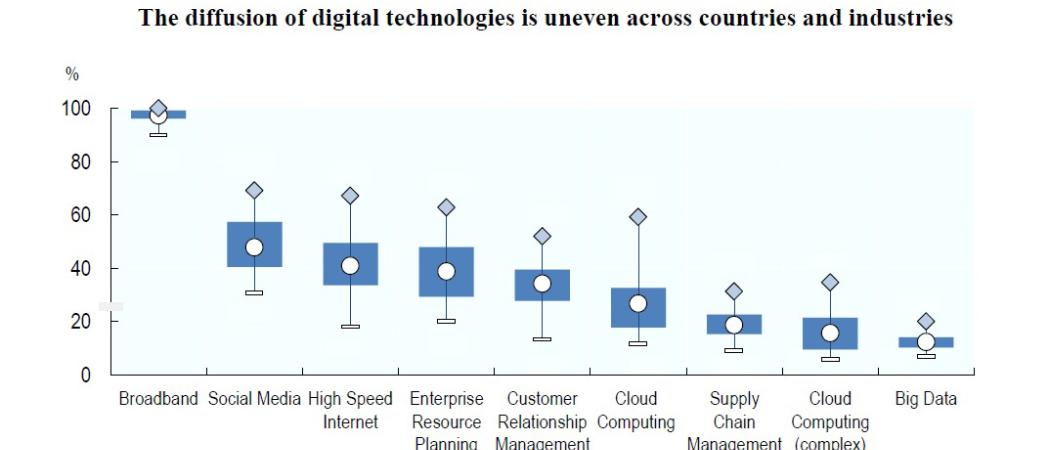OECD study finds huge variation, by country and sector, in the use of digital technologies in business

Chart source: OECD and Eurostat
So we’re all on line these days, with Twitter, Facebook, smartphones and the rest? Maybe at home – but not necessarily at work.
That’s the conclusion of a downbeat report on digital technology uptake in Europe, by the Organisation for Economic Cooperation and Development. In studies across Europe of ICT usage in companies of 10 or more employees, the OECD found virtually all businesses have broadband connections these days, but many don’t appear to use them for anything fancier than email or browsing.
The chart shows the wide swings in uptake, by type of technology. It’s a so-called box diagram: for each technology, it shows how great the variation in update is across countries. A big gap between the top and bottom of each stick-figure suggests a wide variation. The circle in the middle of each figure is the Europe-wide average.
For instance, only about 30 - 40 per cent of European companies use any kind of enterprise resource planning or customer relations software; German and Dutch companies use them the most, Latvians and Turks the least. About a third of companies, on average, use cloud computing resources across Europe – but the story varies widely from power-users in Finland with 60 per cent uptake, to just 18 per cent in Poland. And Big Data analytics is terra incognita to most companies; even in one of Europe’s best-wired countries, the Netherlands, only about one in four companies use it.
The OECD cites a separate McKinsey report that, overall, Europe is currently operating at only about 12 per cent of its digital “potential”. The reasons are many – but key factors are human: Not enough managers and workers know enough about the technologies to realise their value.





 A unique international forum for public research organisations and companies to connect their external engagement with strategic interests around their R&D system.
A unique international forum for public research organisations and companies to connect their external engagement with strategic interests around their R&D system.